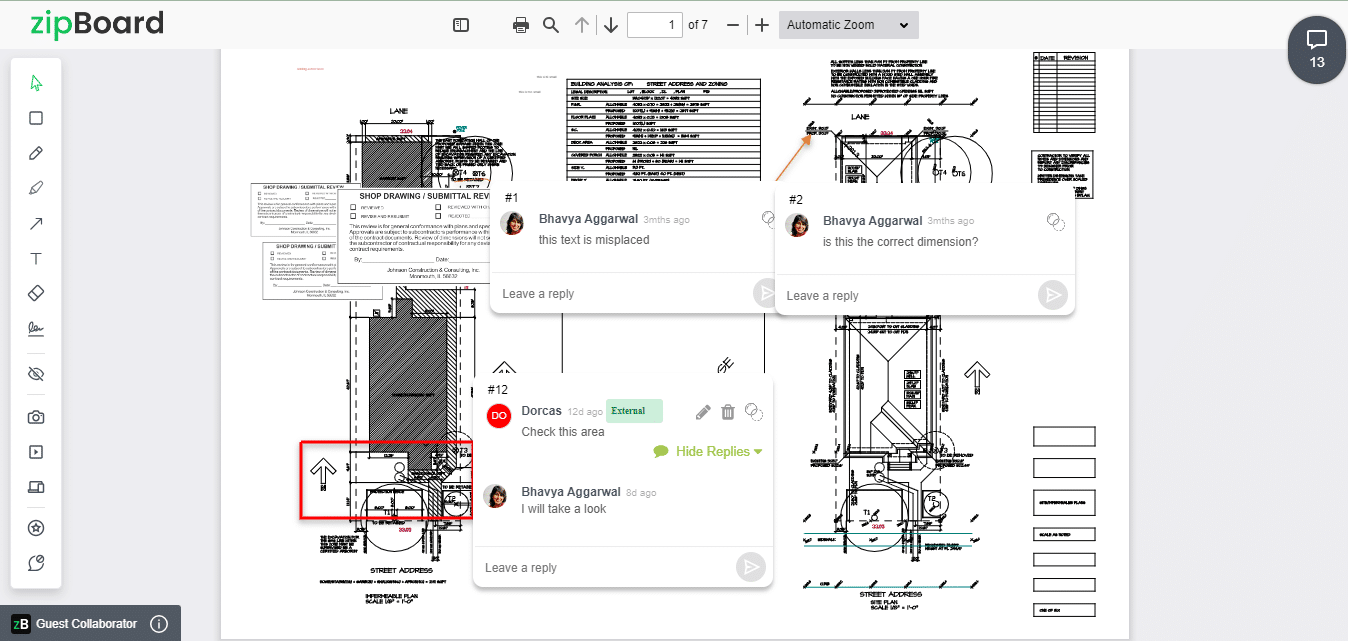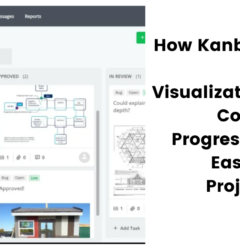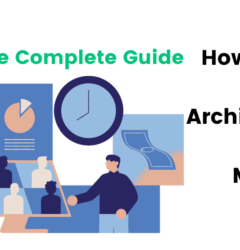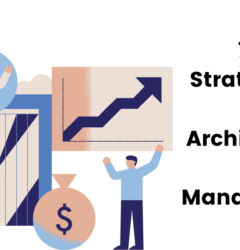Can Architects Work from Home? Yes! But Only If You Do These 5 Things
13 Jun
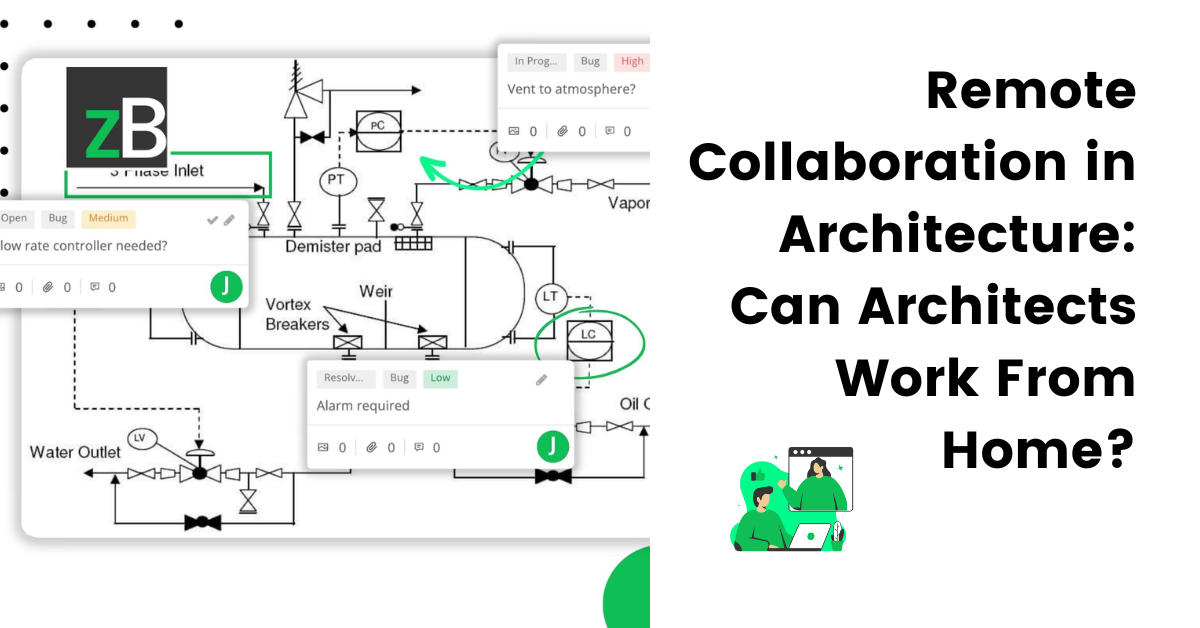
Table of Contents
ToggleIt’s been hard for architecture firms to adjust to working from home since the outbreak of COVID-19.
Thanks to technological advancements, like 3D modeling software, CAD software, GIS software, video conferencing, high-speed internet, and secure VPN, among others, it’s now possible for some people in the Architecture, Engineering, and Construction (AEC) industry to work remotely.
But the question remains, can architects work from home in a secure and productive manner? And what should we expect when they do?
In this article, you’ll learn the following:
- If architects can work from home
- What architecture tasks can be done remotely
- 7 Benefits of remote work for architects and firms
- 5 Considerations for remote collaboration in architecture
- Essential tools to aid architects working from home
- How to improve remote architectural design operations and document management with zipBoard
Kindly note: The terms remote work and work from home would be used interchangeably throughout the article. Working from home forms a part of working remotely.
Can Architects Work from Home?
Yes! It’s very possible for architects to work from home – or anywhere for that matter. Let’s hear from Jessica Sheridan, AIA, Principal of New York-based, Mancini Duffy, an architectural firm, who spoke to Architect Magazine.
Pre-pandemic, we would invite clients to our office ‘design lab’ and host in-person sessions to develop design.” However, in an attempt to adapt to the changes that arose with the pandemic, “We employed a digital platform where both our clients and the full team could log into our virtual reality sessions at any time, interact with our spaces, and leave us notes for when we logged back in.
– Jessica Sheridan, AIA, Principal of New York-based Mancini Duffy, in an article on Architect Magazine
Some architecture tasks can be done remotely, like design reviews, iterations, site analysis, and planning.
The question that remains is how will remote collaboration unfold if not in person.
The good news is that lots of architecture firms have been working remotely for decades and are thriving:
- J Kretschmer Architect first hired a remote worker in 2005.
- Margulies Perruzzi Architects has been incorporating remote working into their workflow before 2015
- Saam Architecture “has been running strong for years on a remote work model, operating under an ideology they’ve called radical flexibility”, and has an annual revenue of $5.7 million as of January 2024.
Some of these firms were even built with remote work in mind. Others also adopt a hybrid work model. So this is to say that, yes – architects can work from home or anywhere they want – provided they have the tools to facilitate that.
What Architecture Tasks can be Carried Out Remotely?
Take a look at the table below to see a breakdown of which tasks can be performed remotely.
While servicing and finalizing client deliverables may not always be possible remotely, architecture firms looking to operate on a hybrid model can adopt Saam Architecture’s strategy of having architects come in office to “finalize deliverables such as models, drawing sets, presentations, and proposals” – as explained by Diana Nicklaus (President and CEO) in an interview with Archinect.
Alternatively, with the appropriate tools firms can adopt Mancini Duffy’s strategy of using virtual reality sessions.
[Free eBook]
Construction Document Reviews: A Guide for AEC Teams
Download your copy now and streamline construction documentation and resources to ensure efficient and effective stakeholder collaboration.
Get Your Free Copy7 Benefits of Remote Work for Architects and Architecture Firms
Access to a wider range of opportunities
Working from home gives architects the opportunity to access opportunities that they would have otherwise not got access to if they were working in-office, from a single location. Remote work allows architects to access clients from different parts of their cities, and even across different counties and regions worldwide. This also benefits architects in emerging markets as they are able to access global opportunities.
Increased turnarounds
When architects work from home, they save time on commuting and work with minimal distractions. Additionally, as a result of the software they use, they are able to streamline their processes. These help increase productivity, thereby leading to faster completion of projects and turnarounds.
Reduced errors and costly risks
Working remotely means making use of software and reducing the use of traditional and manual processes. This helps improve quality and reduce errors and costly risks. For instance, during design reviews, cloud-based design approval tools will enable multiple stakeholders to collaborate asynchronously without losing track of the most recent design, unlike using traditional means to review these documents.
Improved work-life balance
Working from home or anywhere allows architects to have more time for personal projects and also spend time with their families and loved ones. With remote work, architects are able to take good breaks, since their commute time is no longer going to be hours.
Lower fixed costs
Remote firms will be able to save money on business operation costs such as large office spaces and even renting full-time staff, especially now that some architects work part-time in different parts of the world. This money can then be channeled into other equally important aspects of the business.
Increased flexibility
Remote work enables architects to set their own schedules and work at their own pace. It enables them to work at hours of the day that they are most productive – and they can also get time to attend to emergencies that arise during ‘work hours’ because they can always adjust their schedule and make things work.
Reduced commute time and cost
Architects who work from home are able to save time and money on transportation. These resources can be used for other aspects of their personal or professional lives – which is great!
[Free Guide]
13 Common Architectural Firm Mistakes (+ How to Avoid Them)
Learn how to avoid the 13 common architectural firm mistakes and see how you can streamline design operations and project/document management. Increase efficiency in document processing and reviews by 80%
Download Your Copy5 Considerations for Remote Collaboration in Architecture
If big architecture firms like J Kretschmer Architect, Margulies Perruzzi Architects, and Saam Architecture can work remotely, what’s stopping you?
It could be:
1. Implementing the appropriate computer systems: Architects require a diverse set of applications and software for effective remote work, including high-performance hardware setup, software license coordination, secure file access, collaboration tool selection, and troubleshooting support.
2. Security risks: Protecting sensitive client data is important in remote settings. This necessitates secure file sharing, access controls, and confidentiality safeguards.
3. Technical limitations: Accessing and effectively using specialized software and hardware remotely, such as computer-aided design (CAD) tools and high-performance workstations can be challenging and costly. This is often the case for architects who are not tech-savvy or if the required software licenses are not readily available to all team members.
4. Project Site Visits: Remote work may limit architects’ ability to visit project sites regularly. This often impacts the accuracy of design decisions and potentially leads to unforeseen challenges during construction.
5. Collaboration and Communication: Remote collaboration may hinder face-to-face interaction, which can affect the exchange of ideas and real-time feedback. Firms may also struggle with maintaining effective collaboration and communication channels and finding suitable virtual collaboration tools.
Here’s how we remedy these issues:
Implementing the Appropriate Computer Systems
Streamline remote work with remote desktops like TeamViewer for seamless access. Also, use cloud-based platforms like zipBoard for collaborative design projects.
Other examples include AnyDesk, Chrome Remote Desktop, Figma, and Autodesk BIM 360.
Security Risks
Fortify security using encryption tools like VeraCrypt and multi-factor authentication apps like Google Authenticator. Additionally, use design operations and document management software like zipBoard for secure design reviews and collaboration.
Other examples of tools to ensure security include AxCrypt, BitLocker, 7-Zip, Authy, and Microsoft Authenticator.
Technical Limitations
Overcome technical limitations with optimization techniques like MeshLab and cloud-based streaming services such as Frame for remote access to specialized resources.
Other examples include Blender, Simplygon, Parsec, Paperspace, and NVIDIA GeForce NOW.
Project Site Visits
Use virtual reality tools like Matterport and drones like DroneDeploy for real-time data capture and exploration.
Other examples include IrisVR, Enscape, Prospect by Unity, DJI Phantom series, and Autel Robotics EVO.
Collaboration and Communication
Enhance communication with tools like Zoom for video conferencing and Slack regular communication. Additionally, use collaborative design review tools like zipBoard for seamless design operations and document management.
Other examples of collaboration and communication tools include Microsoft Teams, Cisco Webex, Skype, Trello, Assembla, and Basecamp.
A 2022 study by students from the Havard Graduate School of Design, revealed an endorsement of the prospect of remote working for architects.
The results revealed that a substantial majority of respondents felt tasks could be performed remotely across all six phases of practice:
- Construction Administration tasks (67% agreed)
- Construction Documents tasks (79% agreed)
- Practice Management tasks (71% agreed)
- Project Management tasks (81% agreed)
- Schematic Design tasks (77% agreed)
- Pre-Design tasks (73% agreed)
Looking at the past and the present, we can conclude that the future of architecture is – in part – remote.
It is valid to say that architects can work remotely – at least using a hybrid work model, since most tasks can be done from anywhere and a majority of architects in different work levels have given the nod for remote work in architecture.
Essential Tools To Aid Architects Working from Home
Let’s look at specific examples of architecture design software and tools that enable architects to collaborate effectively with engineers, contractors, and other project stakeholders while working from home or anywhere. These tools can also help increase productivity even if you’re working in the office.
CAD software
Architects use CAD software to create 2D and 3D drawings and models of buildings and structures.
Examples: AutoCAD, Revit, SketchUp, and ArchiCAD.
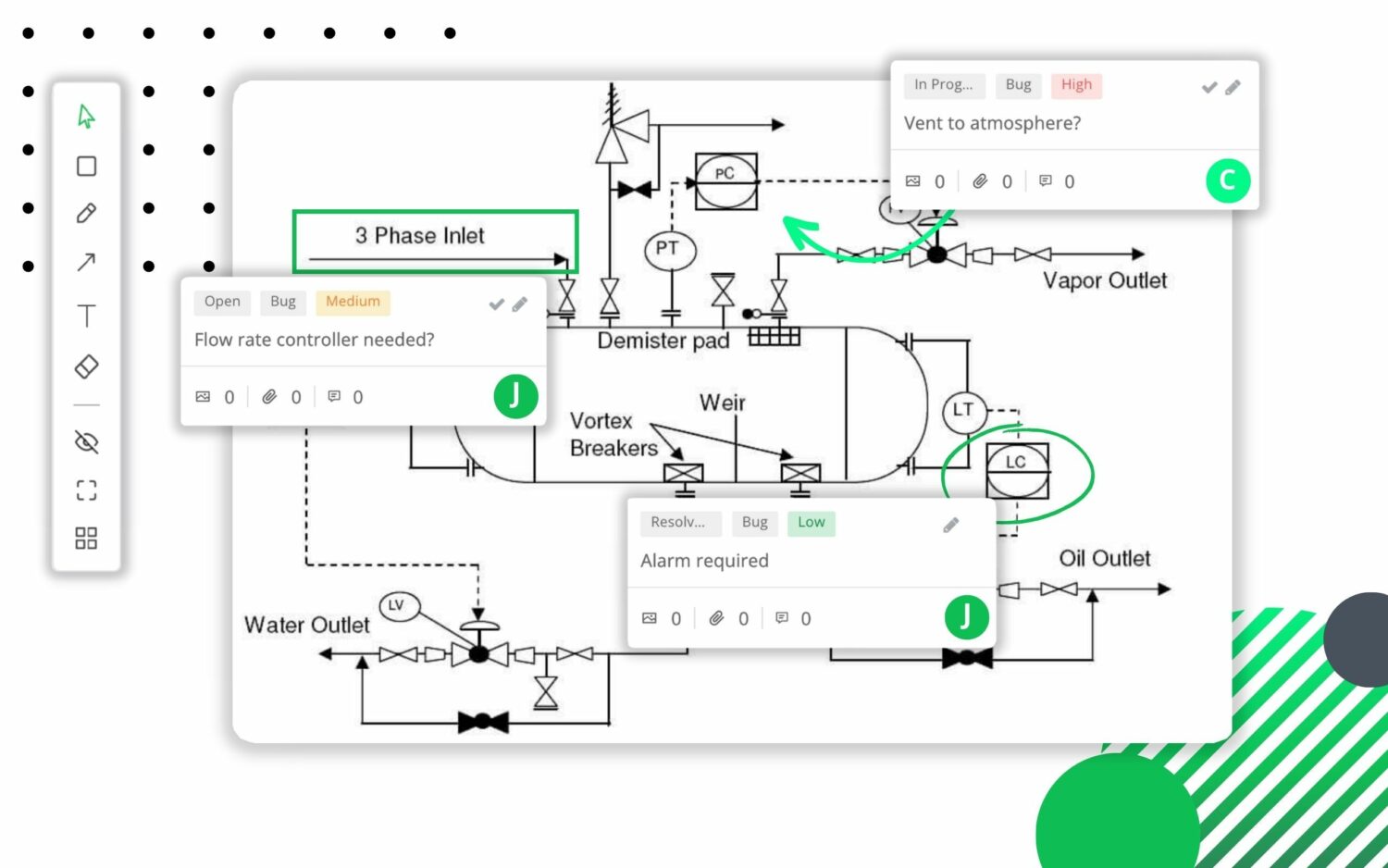
3D modeling software
3D modeling software enables architects to create realistic 3D models of buildings and structures. G2’s expert guide on the best 3D modeling software explores top tools for designing, visualizing, and rendering 3D models, along with a comprehensive comparison of features and user reviews.
Examples: Blender, Maya, and 3ds Max.
Rendering software
Architects use rendering software to develop realistic images and animations of buildings and structures.
Examples: V-Ray, Corona, and Maxwell.
GIS software
Architects can use GIS software to collect, store, and analyze spatial data.
Examples: ArcGIS, QGIS, and MapInfo.
Surveying software
Surveying software allows architects to collect data about the physical features of the Earth.
Examples: AutoCAD Civil 3D, Bentley MicroStation, and Trimble SketchUp.
Remote sensing software
Remote sensing software enables architects to collect data about the Earth’s surface from a distance.
Examples: Landsat, Sentinel-2, and MODIS.
Online databases
Online databases are a great resource for architects to find information about building codes, regulations, and other resources.
Examples: International Building Code, the National Electrical Code, and the Uniform Plumbing Code.
Legal research software
Architects can use legal research software can to find information about legal issues related to architecture.
Examples: Westlaw, LexisNexis, and Bloomberg Law.
Project management software
Architects can use architecture project management software to track the progress of projects and to ensure that projects are completed on time and within budget.
Examples: Microsoft Project, Primavera P6, zipBoard, Monday.com, and Asana.
Turn on audio👆
Client communication tools
Communication tools enable architects to stay in touch with clients, colleagues, and other stakeholders.
Examples: Zoom, Microsoft Teams, and Slack.
Collaboration tools:
Collaboration tools enable architects to share files, documents, and ideas. They help architects collaborate on projects and get feedback in real-time.
Examples: BIM platforms, zipBoard, Google Drive, Dropbox, and Box.
Turn on audio👆
Remote monitoring tools
These tools allow architects to monitor the progress of construction projects from a remote location. They can be used to view live video feeds of the construction site, check the status of equipment and materials, and receive alerts about any problems.
Examples: Procore, SnagIt, and Drones.
Recommended Reading: Procore Document Reviews Made Easy: Procore-zipBoard Integration for PDF Markups & Collaboration
Construction administration software
They help manage the day-to-day operations of a construction project. They provide a centralized platform to keep track of tasks, communicate with project teams and stakeholders, store documents and files, and generate reports.
Examples: Procore, PlanGrid
Streamline your Design Reviews and Collaboration with zipBoard
Turn on audio👆
zipBoard is a cloud-based design feedback and collaboration platform that facilitates efficient design reviews and collaboration among architects, engineers, and other project stakeholders regardless of their physical location.
zipBoard offers a wide range of benefits due to its features tailored to meet the needs of AEC teams working remotely:
Integrations
Click to watch video👆
zipBoard integrates with document management software and architectural design software.
Due to this, architects can easily share their designs, allowing team members to review and provide feedback directly on the design files without leaving their design software or document management platform.
This eliminates the need for time-consuming and often cumbersome file-sharing processes, enabling architects to collaborate in real time and iterate on designs swiftly.
zipBoard also has integrations for communication tools like Microsoft Teams and Slack, as well as project management tools like Wrike.
Click to watch video👆
PDF Markup and Annotation Tools
zipBoard has an intuitive interface with design feedback features like screenshot and annotate, screen recording, checkmarks, etc.
These tools allow clients, contractors, and other project stakeholders collaborating with architects to annotate designs, leave comments, and highlight specific areas for further discussion.
This allows for clear feedback and ensures everyone is on the same page.
Collaboration
zipBoard allows architects to collaborate with multiple stakeholders in one platform.
All you need to do as an architect is create a project in zipBoard, integrate it with your design tool, and invite all your design review stakeholders using share links. All stakeholders will receive email notifications and they can begin reviewing the project from wherever they are.
zipBoard enhances asynchronous reviews and helps improve stakeholder collaboration among AEC teams.
Click to watch video👆
Version control
zipBoard’s version control feature enables architects to track changes made to the designs, making it easier to manage revisions and maintain an organized workflow.
Task management capabilities
With zipBoard, architects can create tasks and assign them to team members, ensuring that every stakeholder is aware of their tasks and due dates.
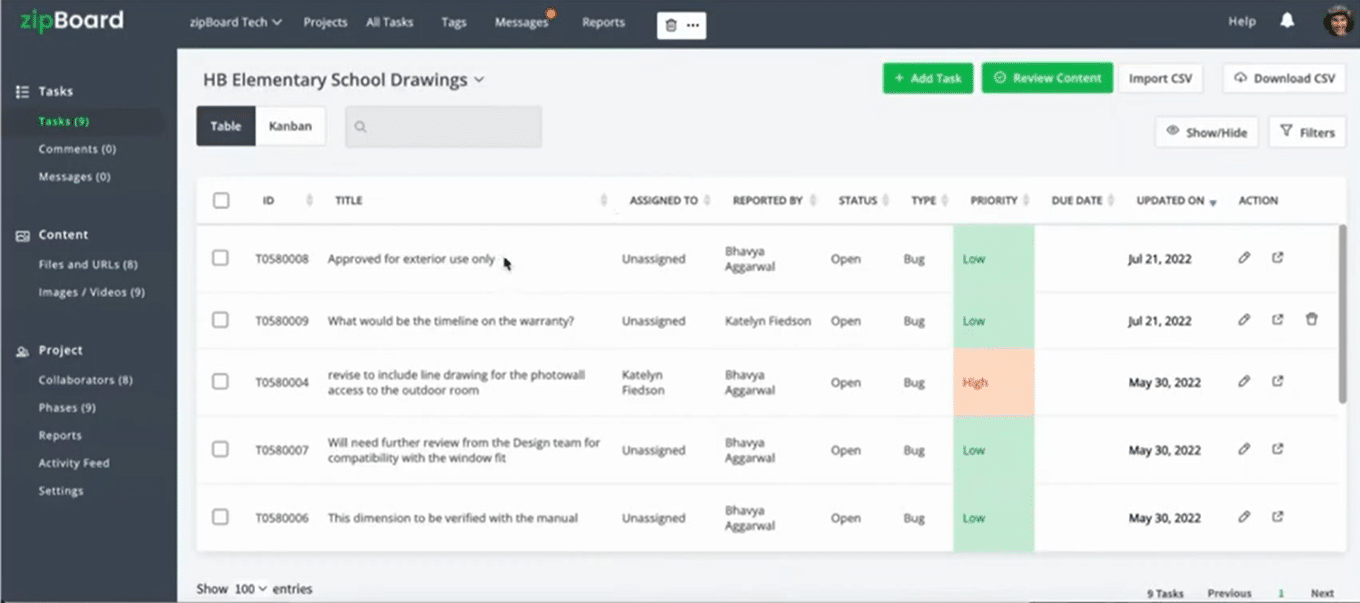
Project management
zipBoard allows architects to organize their design reviews in phases.
The web-based platform helps them create project timelines, set milestones, and monitor progress.
These enable architects to stay organized, improve turnarounds, and keep projects on track, regardless of geographical location.
Want to see how this works?
Final Thoughts
Can architects work from home?
Yes, architects can work from home if they have the appropriate software to facilitate the process.
Some architecture tasks are easier done remotely and others done in person – but it doesn’t mean they can’t be done remotely.
The future of work is remote and distributed. Embrace remote work and remote collaboration in architecture today.
Improve Remote Architectural Design Operations and Document Management with zipBoard
Start your free trial or book a demo today for a personalized walkthrough.
Book DemoStart Free TrialAuthor’s bio:
Dorcas Kpabitey is a Content Marketing Specialist at zipBoard. She began her content marketing journey alongside her BA in Political Science and Spanish degree at the University of Ghana. If she is not tapping away at her keyboard or spending time on Twitter and LinkedIn, she spends her day reading articles, newsletters and books.
Recent Posts
- Best Practices for Efficient Document Reviews and Collaboration December 18, 2025
- MEP Document Management: How to Streamline Reviews & Avoid Rework October 3, 2025
- What Is Online Proofing Software? And Why Content Review Breaks Without It July 11, 2025
- How Laerdal Medical Cut eLearning Review Time by 50% with zipBoard’s Visual Review Tool July 9, 2025
- Why Your Team Needs a Content Feedback System (Not Just Comments in Docs) May 28, 2025
©️ Copyright 2025 zipBoard Tech. All rights reserved.
